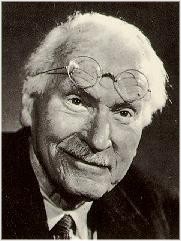Synchronicity as a Sign
by John P. Pratt
Reprinted from Meridian Magazine (12 May 2004)
©2004 by John P. Pratt. All rights Reserved.
Index,
Home
Have you ever had an unusual event occur precisely at a meaningful time and wondered if it was an answer to prayer?
Does the Lord sometimes answer prayers by providing a "sign," that is, a highly
unlikely event? Or perhaps two more common events which occur at the same time, which seem to provide two witnesses of a meaningful answer? Or are all "chance" coincidences entirely unrelated to the prayer?
 |
Does God use synchronicity to answer prayers?
Last Sunday morning I prayed to know if I should write a Meridian article on synchronicity
as a possible communication method used by the Lord. No immediate response came, and I typed
part of my missionary journal of some decades past. My brother soon phoned and expressed
concern about the condition of the world. He
specifically mentioned that he was seeking reassurance that he was not overly concerned about a
threat ignored by most people. I mentioned that I had just transcribed from my journal a special
lesson I had presented on that subject on my mission and that it was based on the April 1966 conference address of Pres. Marion G. Romney about Satan's counterfeit of
God's plan. My brother was astounded because he had just read that very talk an hour before. I
have not thought about that talk since my mission and he could not remember ever having read it
previously. What are the chances that we both would be focused on the same four-decade-old
conference talk at the same time that morning? To us it was meaningful, which qualifies it as an example of synchronicity, as explained below. Was it an answer to my prayer? And did it give my brother the reassurance he sought? We think so. But are we just imposing meaning on what was really just a chance coincidence? Let us consider whether or not the Lord might sometimes communicate through such precisely timed events.
Degrees of Revelation
There are apparently degrees of strength of revelation. Because scientists like to classify
phenomena as a first step to understanding them, let us attempt to classify revelations according to
degrees of strength.
1.1 Visions and Visitations
Perhaps the strongest revelations are those angelic visitations or open visions which occur in broad
daylight. The scriptures contain many examples, such as the visitations to Moses, Alma, Paul or Joseph Smith. These high-profile revelations seem to be given when the individual will have to look back in some future day of testing and remember that it was more than a "good feeling" that got him there. Most of us will live an entire life without experiencing even one such powerful vision, perhaps because such is not required for our life's mission. Indeed, the Lord explained to Miriam, the sister of
Moses, that Moses was in a class above that of most prophets and prophetesses (such as herself),
precisely because of these higher level communications (Num 12:6-8).
 |
Samuel heard the voice of the Lord.
1.2 Dreams and Voices
A seemingly less powerful revelation can come in the form of a dream or a voice, such as when the
wise men were warned in a dream from God not to revisit Herod (Mat. 2:12), or Samuel heard a voice calling him (1 Samuel 3:4). I've met several people who have experienced such communications at least a few times, often with the result that their life was saved by obeying the warning. For example, on the farm my uncle heard a voice commanding him to jump, which he did just before a huge hay
hook fell from a crane right where he had been standing.
1.3 Feelings and Impressions
Now we come to a level where most of us experience celestial communications much more
frequently. There are many times when one has a "feeling" or "impression" to do something.
Perhaps it is only to take a different road, only to discover that there was an accident on the usual
road. Sometimes the feeling is a "whispering" or the "still small voice" of the Holy Ghost, and the
impression is so distinct that it is almost like a voice. Other times it is only a feeling. In both cases
the intensity and clarity of information is below that of a dream or distinct voice. Thus, these
revelations are both less intense but also much more frequent than the more powerful
communications.
1.4 Signs
Another method of communication used by the Lord is the "sign." A sign is a very unusual
occurrence, rare enough to draw attention to itself. Sometimes the word "sign" includes the
meaning of "miracle", such as in a healing (as in Mark 16:17-18). In this article, however, the
word sign does not necessarily refer to a miracle, but only to something very unusual. Often a
sign is something that conforms perfectly to the usual flow of nature, but it still is unusual enough
to demand attention. Let us consider two scriptural examples.
 |
The sign of the dove at the Baptism of Jesus.
The Sign of the Dove. Perhaps the best known sign in scripture is that given at the time of the
Savior's baptism. A dove flew down from the sky and landed on the shoulder of the Savior,
which was highly unusual, but not really miraculous. While it is sometimes thought that the Holy
Ghost transformed himself into a dove, the Prophet Joseph Smith explained that such was not the
case. Rather, the dove was instituted before the creation of the earth as a sign to symbolize the
presence of the Holy Ghost (TPJS, p. 276). Thus, the presence of the dove testified of the
presence of the Holy Ghost.
Lying in a Manger. At the birth of the Savior, the angel needed to tell the shepherds how to
recognize the newborn king when they found him in Bethlehem. How did the angel do that? By
giving them a sign: "And this shall be a sign unto you; Ye shall find the babe wrapped in
swaddling clothes, lying in a manger" (Luke 2:12). Now when was the last time you saw a baby
resting in a ox feeder? That would clearly be an unusual sight, but it would not be classified as a
miracle. What made it a "sign" was the fact that it was predicted by the angel as a way to
identify the correct infant.
Having looked at these four levels of revelation, let us now consider what I propose to be a particular type of sign. It is perhaps the most subtle form of revelation: synchronicity.
 |
The synchronicity of the lunar eclipse at the Crucifixion when the
moon "turned to blood."
2. Synchronicity
Now we come to the subject of this article: synchronicity. What does that word mean? The word
"synchronous" refers to events which happen at the same time. The word "synchronicity" adds
two restrictions to that meaning. First, neither of the events can cause the other. Scientifically
stated, the events are not "causally related." Secondly, in an attempt to distinguish these events
from those which happen purely by chance, the definition also stipulates that the events be a
"meaningful" coincidence.[1] This is the sticky part for a scientist. Meaningful in what way?
Meaningful to whom? It refers to the coincidence of events occurring at a time which was
meaningful to observers of the events. It other words, two events occur at the same time, in
which one does not appear to have caused the other, but both events appear to indicate some
meaning to the observer. But isn't science supposed to deal with "objective reality," independent of
meanings attached to events by observers?
 |
A solar eclipse is breathtaking.
Because this definition opens the door to the entire field of superstitions, omens and
portents, where, for example, the appearance of a comet might be interpreted to mean the downfall
of the emperor, the question arises as to why this word has been introduced into the discipline of
science where causality has reigned supreme. The reason is that it was only until about 1920-1930
that the world of physics was based almost entirely on the principal of causality. The universe was
viewed as a great machine where everything occurred because of forces acting on objects, which in
turn were caused by previous forces acting on objects.
All of that changed with the advent of quantum mechanics where non-causal events
suddenly appeared everywhere, especially on the atomic level. Determinism was replaced by the newly enthroned monarch of "probabilty." Even a brief review of these
phenomena is beyond the scope of this article, but today it would be hard to find a physicist who
believes in a deterministic universe.
2.1 Jung and Pauli
 |
Psychologist Carl Jung coined the word "synchronicity."
The concept of synchronicity was born from the meeting in 1928 and subsequent friendship of the
renowned psychologist Carl Jung with the famous physicist Wolfgang
Pauli. Pauli had been a great force in the formulation with Werner Heisenberg of quantum
mechanics. Jung had studied Eastern and ancient philosophies where, for example, people would
cast lots to determine who should perform a task or who was the guilty party (compare 1 Nephi 3:11, Jonah 1:7). Jung noticed that such practices were often more accurate than chance would
predict, and Pauli was able to provide partial physical explanations of how that could be possible.
It took them years to have the courage to publish a jointly authored book on such a controversial
topic, but they finally did so in 1952.[2] It was Jung who coined the word "synchronicity," which
he defined as "the coincidence in time of two or more causally unrelated events which have the
same or similar meaning." He also noted that synchronicity "is the prejudice of the East, causality
is the modern prejudice of the West."[3] He also proposed that an absolute "meaning" for such coincidences might be provided by a "collective unconscious" mind of all mankind.
 |
Physics Nobel Laureate Wolfgang Pauli
This subject is still too controversial for most modern scientists. Most probably do not
even know the word "synchronicity," and most would reject the concept as pseudo-scientific if
they did. They continue to believe that all synchronicity is just the result of chance occurrences and
that no events have "meaning." For example, they would relegate all unusual celestial events to
mere chance, and think it ludicrous that some sort of "meaning" be associated with them. But that
is not what the scriptures teach. That is, whereas we might not think of a comet as being a "sign"
of anything, let us remember that the Star of Bethlehem was given as a sign of the birth of the
Savior. Herod's astrologers did not discern the true meaning, but the important point is that
there was indeed a true meaning, and it was discerned by the magi. Moreover, we have yet to
see the "grand sign of the Son of Man in heaven," heralding his return. The Prophet Joseph Smith
said that it will be dismissed by the world as merely "a planet, a comet, etc.," so that most will
totally miss the significance (TPJS, p. 287).
2.2 Synchronicity as a Sign
Synchronicity is apparently one type of sign, and perhaps the most subtle type. A sign is a very unusual occurrence, and can include really spectacular events, such as the parting of the Red Sea, or miraculous healings, or having the sun darkened for three hours when the Savior died. But as discussed above, a sign can also include more pedestrian events such as the infant Christ child being laid in a manger. Synchronicity can also be a sign by having two somewhat common events occur at the same time, both of which seem to point to the same meaning. Thus, there is still something very unusual, but with synchronicity, it is the simultaneous timing of the two or more events which is unusual, rather than the rarity of the events themselves. Keeping these fine distinctions in mind, let us now
return to the above scriptural examples in the light of the concept of synchronicity.
2.3 The Sign of the Dove
In the sign of the dove, it was not just that a dove happened to land on the
Savior's shoulder one day when he was cutting wood as a carpenter's apprentice. It was that it
occurred when the Savior had just been baptized and also when a voice was heard from heaven
declaring, "This is my beloved Son, in whom I am well pleased" (Mat. 3:16-17). Thus, the sign
of the presence of the Holy Ghost was given precisely when the voice of the Father was also heard
as a sign of his presence. This coincidence of timing, combined with the meaningful interpretation
relating to the Holy Ghost, qualifies this sign as an excellent example of synchronicity.
 |
The shepherds arrived when Jesus was in the manger.
2.4 Lying in a Manger
And what about the baby lying in the manger? What if the shepherds had
arrived to see an empty manger, with Mary holding the infant Jesus? It just wouldn't have been
the same if Mary had needed to explain that Jesus had been lying in the manger only moments
before they had arrived. No, we are explicitly told that the shepherds found "the babe lying in a
manger" (Luke 2:16). Thus, precise timing is often involved, in this case involving the arrival of the shepherds, so this sign also involves synchronicity. The meaningfulness of the sign was provided by the angel. Without those words, finding the babe in a manger would probably not have been
interpreted as a sign, and even might have disqualified the infant in their minds from having been
considered as a newborn king.
2.5 Other Scriptural Examples
There are many scriptural examples of synchronicity, but they are not the obvious miracles performed. Most of the "signs" which follow the saints, such as healing the sick, casting out devils and speaking in tongues come as direct results of priesthood authority being exercised. Thus, there is a definite "cause and effect" relationship which disqualifies them as being examples of synchronicity. And it is the same with the greater miracles such as Moses parting the Red Sea. Of course, Pharaoh might say that it was just a chance coincidence that the sea happened to part just when Moses stretched out his hand, but then Pharaoh had thought that all of the plagues were the result of chance or magic. But such miracles were clear examples of the power of God being exercised.
 |
Joseph's life was saved when the Ishmaelite traders "happened" by.
So where are the examples of synchronicity? They are all at a much more subtle level, which really do appear to be chance coincidences, but which which have great meaning, either to the observer or to the future course of history. Some apparent chance coincidences occurred when the Ishmaelite traders just happened by as Joseph was about to be killed by his brothers, or when the Pharaoh's daughter just happened to find the baby Moses before a crocodile did. Both of these events changed the course of history to such an extent that the hand of the Lord must surely have been involved in an unseen way.
2.6 Peter's Denial
A classic example of synchronicity is when the Savior prophesied that Peter, who had said he would die for Jesus, would deny him three times before the cock would crow (Luke 22:34). When Peter later denied him the third time, "immediately, while he yet spake, the cock crew. And the Lord turned, and looked upon Peter" (Luke 22:60-62). The crowing of the cock was not caused by Peter's denial, but occurred at the same time. Because of the Savior's prophecy, that synchronicity had such meaning to Peter that he not only wept bitterly, he became one of the most courageous apostles. He later cheerfully suffered being manacled to a post in a horrible, rat-infested torture-chamber dungeon for nine months. He could not lie down to sleep, there was absolutely no light, and the stench of rotting human flesh was nauseating. Finally, he was crucified upside-down in Rome in AD 67, and all of this to avoid again denying the Savior.[4] Apparently the synchronicity of the cock crowing had a truly profound, life-changing effect on this great apostle.
 |
Can a meteor be an answer to prayer?
3. Synchronicity and Prayer
Let us consider a few examples of synchronicity in everyday life. A friend of mine told me that he
had prayed to know whether to join the Church for some time with no apparent response. One
night as he looked at the stars and contemplated the question, he saw a brilliant shooting star streak
across the heavens. He asked me, as an experienced member of the Church, if that might have
been an answer to his prayer. What would you have told him?
I asked him what he felt about it. He replied that he had felt it was a direct answer to
prayer, and that it led to him being baptized. But now he wasn't so sure, because now most
answers come to him as a feeling or impression, rather than what could be merely a chance
occurrence. What do you think? How should I have replied? What happened to me years later
seemed to answer this question once and for all in my mind.
 |
Synchronicity at sunrise.
3.1 Precise Timing
Once I felt very alone, even though I was on a ward campout. It was early in the morning,
and I was up before anyone else. I thought in my heart, "I wish that I knew that the Lord knew me
personally." Suddenly, into my mind burst the strong impression, "Just turn around and you will
know." It was so strong that I immediately turned, having no idea what I might see. At that very
moment, the first flash of sunrise appeared on the horizon. Sunrises are always a spiritual
experience for me, and I have sat for hours watching for that very first light to herald the coming
day. But I was unprepared for the surge of Spirit which gushed through my entire being at that
moment. I knew that the Lord had spoken directly to me and answered my secret longing.
In these examples, one could ask, was the falling star going to fall if my friend hadn't been
looking? Was the sun going to rise that morning if I hadn't turned around? Of course, these
events would happen according to the laws of nature, so no miraculous event occurred. Then what
was it that made them so important to us that we felt that a prayer had been answered? To me the
answer is twofold. First, it was in the timing. Both of us had been thinking about the concern at
the very time that the event happened. And secondly, each event was accompanied by the spiritual
impression that it was indeed an answer.
 |
Synchronicity as Moses is discovered.
3.2 Scripture Study
One of the most common forms of synchronicity as a sign answering a prayer involves scripture
study. We have been counseled many times by our spiritual leaders to study the scriptures daily,
and that by doing so we will not only gain more knowledge of God's dealings with mankind, but
also we will receive answers to our prayers as we read. There seem to be two distinct ways this
happens. First, during the normal course of study for that day, one suddenly encounters a
scripture that explicitly answers the prayer. Even if the scripture doesn't exactly apply, the Spirit
will often testify of the answer, making the scripture appear to precisely relate to the question at
hand. Secondly, sometimes the "random page" method has been found to produce startlingly
accurate and meaningful results. I know some people who will pray about a subject and then open
the scriptures to a random page and point to a random place on the page and read that verse. They
have found that more often than not, the verse applies exactly to their question. While I personally
am usually in the first, more methodical camp, I had one notable experience with this method. As
a youth, I had prayed to know if a certain man's teachings were inspired. One morning after
prayers, the distinct thought entered my mind to open the Doctrine and Covenants to get my
answer. As I was leaving the house to catch the school bus, I grabbed a D&C and opened it
randomly. My eyes fell on the verse that says that whoever forbids us to eat meat is not ordained
of God (D&C 49:18). I instantly had my answer, because this man had taught that we were
breaking the laws of God by eating meat. Immediately I lost all interest in what had been his
exciting "revealed" teachings, because I knew for myself that he had been deceived.
One advantage of this "random" method seems to be that allows the inclusion of unusually
rare verses to be found. There are very few places in all of scripture that explicitly state what that
one does. In one's normal scripture study, that verse might only be read once in four years, whereas
the random method led me to it in an instant.
3.3 Everyday Examples
Suppose you are shopping and see an old friend from high school. Is that synchronicity?
Probably not. After all, unusual events do happen, and random chance does appear to exist. But
what if the old friend turns out to know of an opening at their place of employment which is just
what you have been praying for help in finding? Now the dimension of "meaning" is added to the
coincidence, which may well qualify it both as an example of synchronicity and also as an answer
to prayer. The purpose of this article is to suggest that the Lord might use synchronicity as a
"sign" to indicate an answer to prayer. After all, you might look for a job in many places. One
way the Lord could indicate which job is best might be to include an unusual coincidence as a sign.
Of course, in the final analysis, one needs to make the decision and then pray for confirmation
(D&C 9:8). The main point here is that sometimes a rare event might point the way to notice one
possibility more than others.
As a scientist, I would love to be able to analyze and categorize these examples more
perfectly, but there seem to be so many variations that I must consider this article only as a first
attempt at drawing broad lines to help understand what seems to commonly occur. My main point
is to encourage us all become more aware of the possibility that the Lord might use the unusual
timing of events to be an indication of, or to reinforce, an answer to prayer. But it also seems prudent to expect that
any such event should also be confirmed by the witness of the Spirit, testifying that such is the
case. As I searched the scriptures, most cases recorded involved either a prophecy being fulfilled
or some other second witness. The Lord has promised that he always works through two or more
witnesses. The most I'm suggesting in this article is that synchronicity might be allowed to count
as one witness.
4. Conclusion
Synchronicity refers to "meaningful coincidences." While it was introduced as a scientific concept
worthy of study and experiment, it has been ignored and discredited by the scientific world
because of the atheistic assumption that chance rules the universe and also because of the difficulty
in ascribing an absolute "meaning" to events. This article suggests that the Spirit can provide the
meaning, and that the Lord might sometimes use synchronicity as a sign in answer to prayer.
Whereas most prayers appear to be answered with feelings or impressions, the precise timing of an
unusual event may contribute as another witness of the correctness of the answer. Moreover, such
events can help precisely specify one of many alternatives. We might all do well to be open to the
possibility that God might employ synchronicity as a means of answering prayer.
Notes
- One definition is "Meaningful coincidence, significantly related patterns of chance," from
Chetwynd, Tom, A Dictionary of Symbols (New York: Granada, 1982), quoted by Peat, F.
David, Synchronicity: The Bridge Between Matter and Mind (New York: Bantam Books, 1987),
p. 1.
- C. G. Jung and W. Pauli, The Interpretation and Nature of the Psyche, trans. R.F.C. Hull and P. Silz (New York: Pantheon, 1955).
- Peat, Synchronicity, p. 22. The last example of synchronicity in Pauli's life was that, after spending countless hours failing to explain what is called the "fine structure constant " (equal to 1/137), he was admitted to room 137 in the hospital. On seeing that number, he is said to have remarked, "I will never get out of here," and he died shortly thereafter. (Peat, Synchronicity, p. 29).
- McBirnie, William S., The Search for the Twelve Apostles (Wheaton, Ill.: Tyndale House, 1973), p. 64-67. This book contains a wealth of well documented accounts of the ministries and eventual demise of all of the apostles, except John, for whom no remains have been found. They truly went and taught "all nations" (Mat. 28:19).












